Hầu hết các ứng dụng phổ biến đều có chế độ an toàn cho phép người dùng chạy chương trình với chức năng hạn chế khi mọi thứ không chạy như mong muốn. Đó là trường hợp của Outlook - một trình quản lý email phức tạp sử dụng Chế độ An toàn để bỏ qua rất nhiều vấn đề khiến nó không thể khởi động. Bạn có thể cố ý khởi chạy Outlook ở Chế độ An toàn, nhưng nó cũng có thể tự khởi động ở chế độ này.

Trừ khi bạn tự khởi tạo Chế độ An toàn vì bất kỳ lý do gì, tôi sẽ không khuyên bạn tiếp tục sử dụng Outlook ở chế độ này. Bạn sẽ không thể lưu các mẫu, tùy chọn và bạn sẽ không thể sử dụng các thẻ thông minh, trong số các thẻ khác. Nếu bạn đang ở trong loại tình huống này, bạn nên coi Chế độ an toàn như một công cụ chẩn đoán và giải quyết sự cố của mình.
Khi nào Chế độ an toàn được sử dụng trong OutLook
Outlook sẽ thường xuyên cập nhật sổ đăng ký hệ thống để cho phép các tiện ích mở rộng mới bạn cài đặt hoạt động như bình thường. Nếu chương trình phát hiện sự cố khi khởi chạy khiến chương trình không thể chạy, chương trình sẽ tự động chuyển sang Chế độ an toàn . Điều này thường xảy ra ngay sau khi bạn cài đặt tiện ích bổ sung mới không hoạt động tốt với phiên bản Outlook của bạn.
Bạn có thể tự kích hoạt chế độ an toàn bằng cách mở cửa sổ Chạy và nhập Outlook / safe và nhấn OK .

Trong trường hợp Outlook tự động khởi động ở Chế độ An toàn , đó thường là dấu hiệu cho thấy có điều gì đó không hoạt động bình thường. Đôi khi, Outlook sẽ quản lý để xác định thành phần bổ trợ đang ngăn Outlook khởi động bình thường. Nếu nó yêu cầu bạn vô hiệu hóa thành phần bị lỗi, hãy thử và xem liệu Outlook có khởi động bình thường không.

Trình kích hoạt Chế độ an toàn tiềm năng
Nếu bạn đang sử dụng phiên bản 2010, rất có thể sự cố của bạn là do bản cập nhật KB3114409 khiến Outlook khởi động ở Chế độ an toàn và hoàn nguyên về cài đặt mặc định. Trong trường hợp bạn đang sử dụng phiên bản Outlook cũ hơn như 2007 hoặc 2003, sự cố của bạn có thể liên quan đến dịch vụ Windows Search . Bổ trợ sai cũng có thể xung đột với phiên bản Outlook của bạn đến mức bạn sẽ buộc nó khởi động ở Chế độ an toàn .
Đây chỉ là ba trong số những thủ phạm tiềm ẩn, nhưng nguyên nhân có thể bắt nguồn từ rất nhiều nơi.
Dưới đây bạn có một bộ sưu tập các bản sửa lỗi đã giúp rất nhiều người dùng ngăn Outlook chạy ở chế độ An toàn . Thực hiện theo các phương pháp ở trên theo thứ tự phiên bản Outlook của bạn cho đến khi bạn tìm thấy bản sửa lỗi giải quyết được sự cố của mình.
Phương pháp 1: Tắt bổ trợ trong Chế độ An toàn (Tất cả các phiên bản Outlook)
Đây là một sự cố phổ biến trên mọi phiên bản Outlook từ Outlook 2007 đến Outlook 2016 . Điều này xảy ra vì một số bổ trợ nhất định sẽ xung đột với phiên bản Outlook của bạn. Điều này thậm chí còn có khả năng xảy ra với các phần bổ trợ lỗi thời được cài đặt trên các phiên bản mới nhất của Outlook.
Lưu ý: Nếu bạn đã cài đặt bổ trợ ABBYY FineReader trước khi lỗi này bắt đầu xảy ra, hãy làm theo các bước bên dưới để xóa bổ trợ khỏi phiên bản Outlook của bạn.
- Xác nhận rằng Outlook đang ở Chế độ An toàn bằng cách kiểm tra xem biểu tượng trên thanh tác vụ của bạn có dấu chấm than hay không.

Lưu ý: Bạn cũng có thể xác nhận bằng cách xem bằng cách xem bạn có phát hiện ra (Chế độ an toàn) ở phần trên cùng của màn hình hay không.

- Bây giờ, mở rộng tab Tệp và nhấp vào Tùy chọn .

- Bây giờ hãy nhấp vào tab Bổ trợ . Từ đó, truy cập trình đơn thả xuống bên cạnh Quản lý và chọn Phần bổ trợ COM từ danh sách. Nhấp vào Đi để tiếp tục.
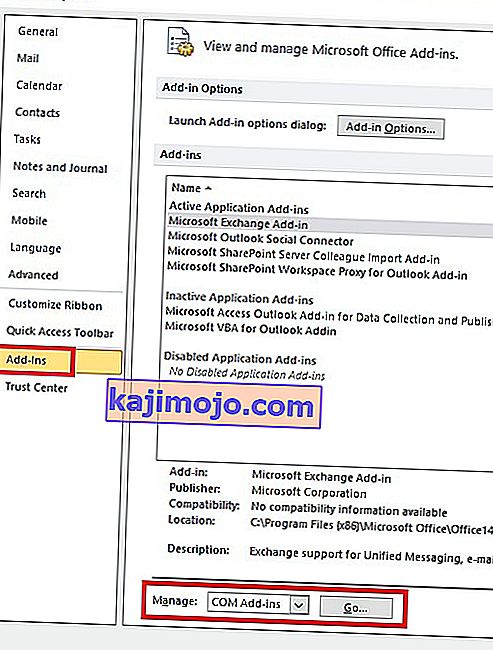
- Tại thời điểm này, bạn nên chụp ảnh màn hình của danh sách bổ trợ và lưu nó ở nơi có thể truy cập được. Điều này sẽ giúp bạn khôi phục cấu hình bình thường của Outlook nếu có bất kỳ trục trặc nào xảy ra sau khi bạn tắt bổ trợ.
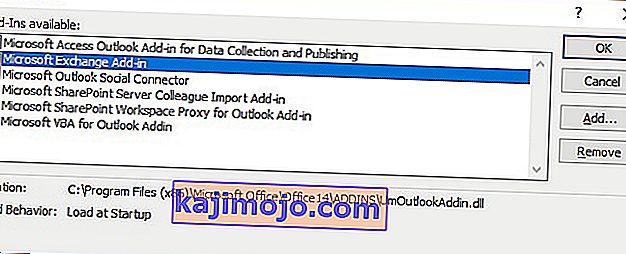
- Tắt từng mục nhập (xóa các hộp kiểm đã chọn) và nhấn OK .
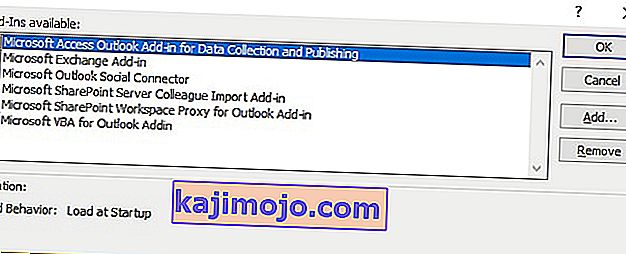 Lưu ý: Chưa nhấn Xóa . Trước tiên, chúng tôi cần xác nhận rằng họ đang gây ra sự cố.
Lưu ý: Chưa nhấn Xóa . Trước tiên, chúng tôi cần xác nhận rằng họ đang gây ra sự cố. - Đóng Outlook và mở lại nó. Nếu chương trình khởi động ở chế độ bình thường, sự cố của bạn đã được giải quyết.
Lưu ý: Trong trường hợp nó vẫn khởi động ở Chế độ An toàn , hãy chuyển đến Tùy chọn tệp> Phần bổ trợ và bật lại các phần bổ trợ mà chúng tôi đã tắt ở bước 5 và chuyển sang Phương pháp 2 .
- Quay lại Tệp> Tùy chọn> Phần bổ trợ và bật lại một cách có hệ thống từng phần bổ trợ cho đến khi bạn tiết lộ cái đang gây ra xung đột.
- Chọn nó và nhấn Xóa .
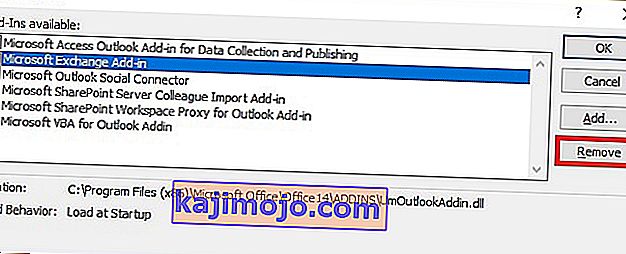
- Khởi động lại Outlook và xem nó có khởi động ở chế độ bình thường hay không.
Phương pháp 2: Khôi phục máy tính của bạn bằng Khôi phục hệ thống (Tất cả các phiên bản Outlook)
Khôi phục hệ thống là một tính năng của Windows cho phép người dùng hoàn nguyên trạng thái máy tính của họ về thời điểm trước đó. Điều này phục vụ mục đích của chúng tôi nếu chúng tôi có thể trở lại trạng thái trước đó nơi Outlook bắt đầu hoạt động sai. Đây là những gì cần làm:
- Giữ phím Windows và nhấn R. Gõ rstrui.exe và nhấn OK .
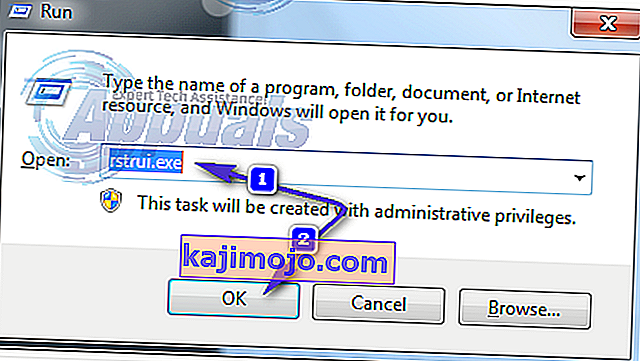
- Trong cửa sổ Khôi phục Hệ thống, chọn Chọn một điểm khôi phục khác và nhấn Tiếp theo.
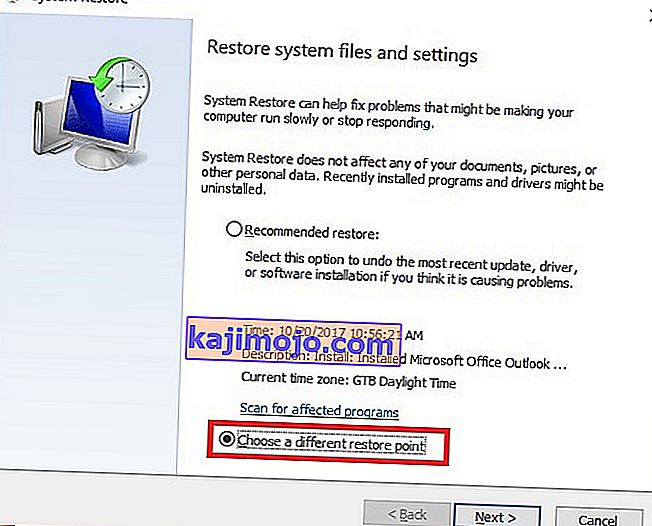
- Làm dày hộp bên cạnh Hiển thị thêm Điểm khôi phục.
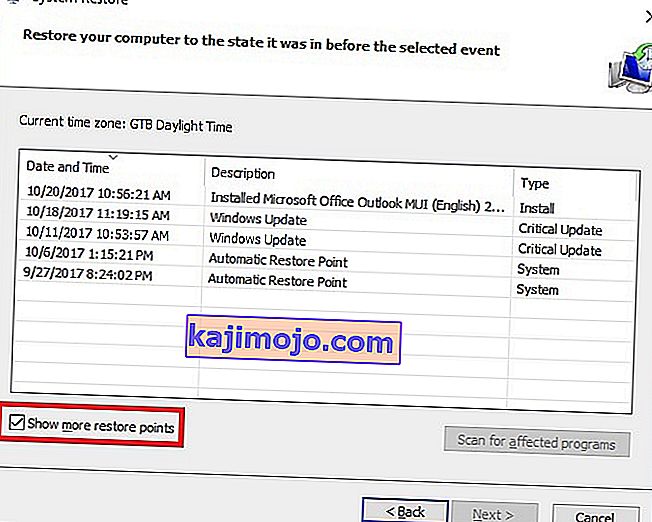
- Tìm một điểm khi Outlook đang hoạt động, sau đó chọn điểm khôi phục đó và tiến hành theo hướng dẫn trên màn hình để khôi phục máy tính về thời gian trước đó.
- Sau khi hoàn tất, hệ thống sẽ bắt đầu khôi phục. Sau khi khôi phục xong, hãy kiểm tra xem Outlook có hoạt động không. nếu không, hãy chuyển sang Phương pháp 3 .
Phương pháp 3: Khôi phục về phiên bản trước của Outlook
Nếu việc khôi phục hệ điều hành máy tính để bàn của bạn về phiên bản cũ hơn không hoạt động, hãy thử khôi phục Outlook về phiên bản trước. Đây là cách thực hiện:
- Bấm Bắt đầu và nhập Outlook.exe trong hộp thoại tìm kiếm. Nhấp chuột phải vào nó và chọn Thuộc tính .
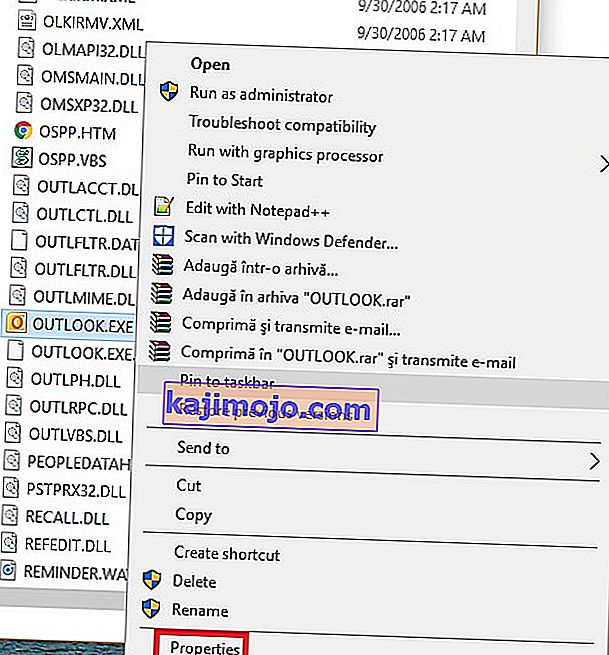
- Sau đó, chuyển đến tab Phiên bản trước và tìm tệp Outlook.exe có ngày hoạt động. Nhấp vào Mở để xem nó có hoạt động hay không và mở mà không có Chế độ An toàn .
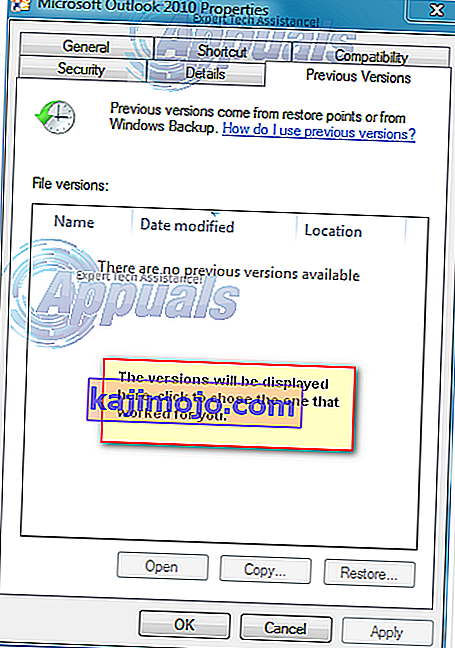 Lưu ý: Đảm bảo rằng Outlook không hoạt động được mở trước đó ở Chế độ An toàn đã bị đóng vì chúng tôi hiện đang chạy một trong các bản sao được lưu trong các phiên bản trước. Làm tương tự cho tất cả các phiên bản được liệt kê ở đó. Mở / Đóng cho đến khi bạn thấy cái mở mà không có Chế độ An toàn. Nếu nó hoạt động, hãy tiếp tục mở Cửa sổ.
Lưu ý: Đảm bảo rằng Outlook không hoạt động được mở trước đó ở Chế độ An toàn đã bị đóng vì chúng tôi hiện đang chạy một trong các bản sao được lưu trong các phiên bản trước. Làm tương tự cho tất cả các phiên bản được liệt kê ở đó. Mở / Đóng cho đến khi bạn thấy cái mở mà không có Chế độ An toàn. Nếu nó hoạt động, hãy tiếp tục mở Cửa sổ. - Giả sử rằng bạn hiện có phiên bản Outlook đang chạy mà không có Chế độ An toàn từ một trong các phiên bản trước. Giữ Windows Key và Nhấn R . Gõ taskmgr và bấm OK .
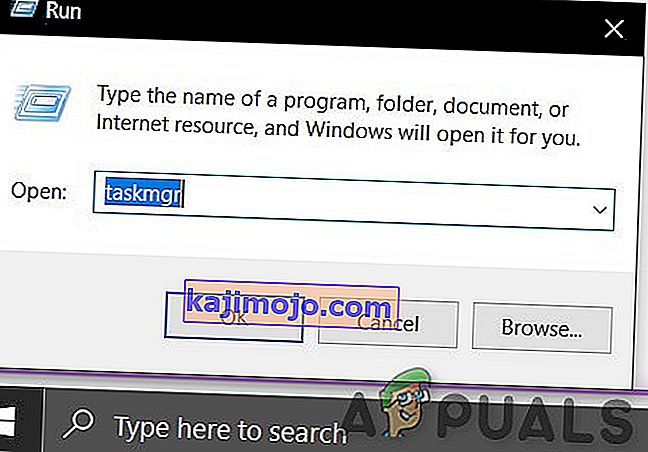
- Trong Cửa sổ Trình quản lý Tác vụ , Đi tới Tab Quy trình , tìm Outlook.exe , nhấp chuột phải vào nó và chọn Mở Vị trí Tệp.
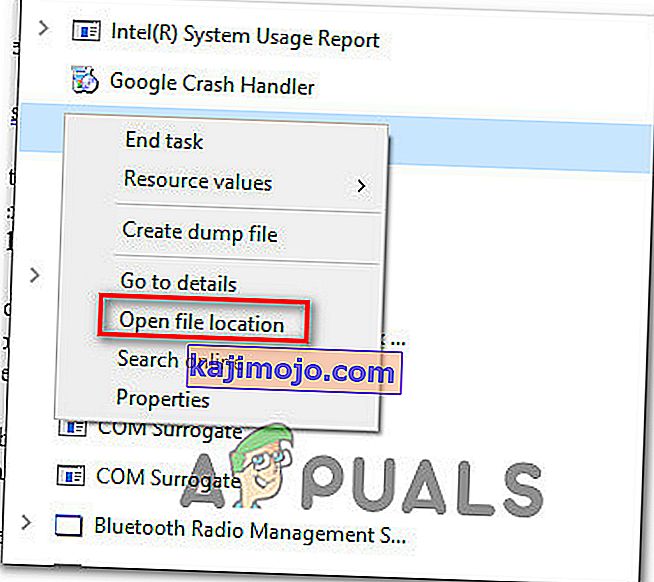
- Sao chép tất cả các tệp từ cửa sổ tiếp theo, sau đó điều hướng đến C: \ Program Files (x86) \ Microsoft Office \ Office. Dán hồ sơ đã sao chép trước đó vào đây.
- Hãy thử mở lại Outlook và xem liệu nó có khởi động ở chế độ bình thường hay không.
Phương pháp 4: Gỡ cài đặt bản cập nhật KB3114409 (Outlook 2010)
Vào năm 2015, Microsoft đã phát hành một bản vá bảo mật khiến Outlook chạy ở Chế độ An toàn và hoàn nguyên về cấu hình mặc định. Các cấu hình do người dùng tạo không bị mất vĩnh viễn và sẽ trở lại khi Outlook quản lý để khởi động ở chế độ bình thường.
Nếu bạn gặp sự cố này, có hai cách để tiếp tục. Vì Microsoft đã phát hành bản cập nhật khắc phục sự cố do KB3114409 gây ra , chúng tôi có thể cài đặt bản cập nhật đó qua bản cập nhật không hợp lệ. Một lộ trình khác chỉ cần gỡ cài đặt KB3114409 .
We highly recommend you to go for installing the official Microsoft update fix. But regardless of which option you opt for, we will guide you through the whole process.
Using the official Microsoft fix
Microsoft update KB3114560 was issued specifically to fix the damage done by KB3114409. As a rule of thumb, you should always install security updates from the official website. Here’s what you need to do:
- Access this official link and click on one of the two different update versions, according to your PC specs.
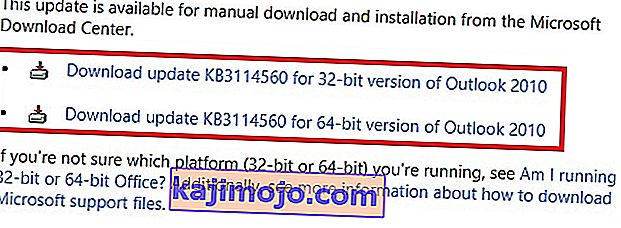
- Select the default language of your Outlook program and click on the Download button.
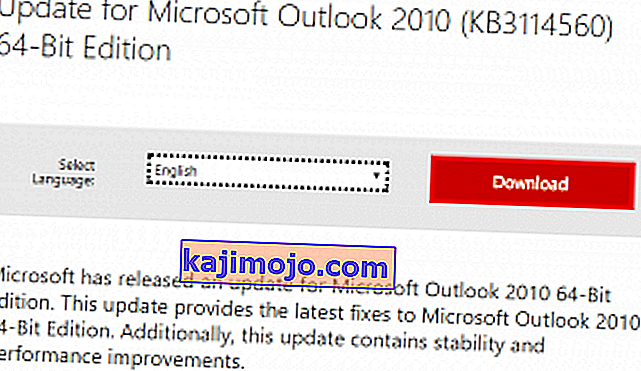
- Once the update has been downloaded, open the executable and follow through with the installation process.
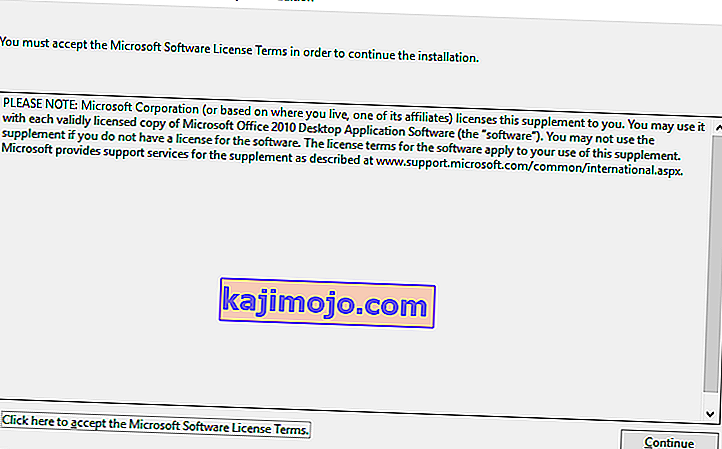
- Restart your PC, open Outlook again and see if the issue has been resolved.
Uninstalling the KB3114409 update
- Close Outlook completely.
- Open Control Panel, click on Uninstall a program.
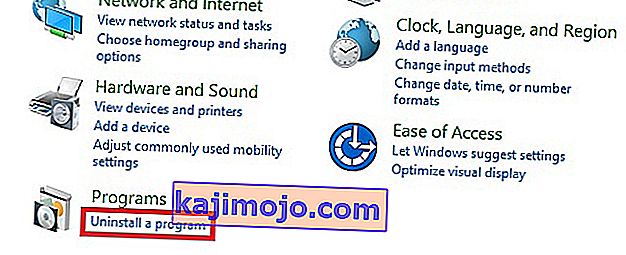
- Once you’re in the Programs and Features window, click on View installed updates.
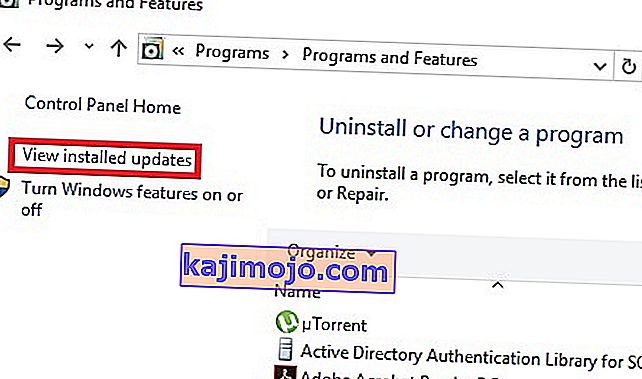
- Use the Search Installed Updates search bar in the top-right corner to search for the bad update (KB3114409 ).

- Once you manage to identify the bad update, click the Uninstall button and follow through with the confirmation prompts.
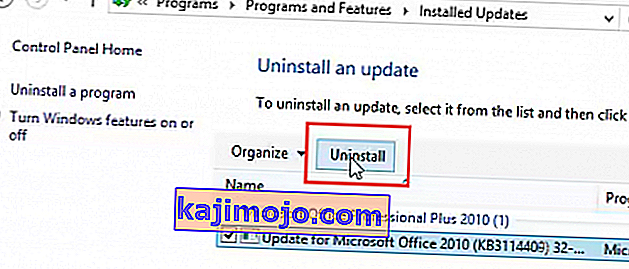
- Restart your PC, open Outlook and see if the issue repeats.
Method 5: Doing an Outlook Profile reset (All Outlook versions)
If you experience hanging at the initial Outlook splash screen (right before it initiates Safe Mode), you might need to do a profile reset. Here’s how to do it:
- Go to Control Panel > Mail and click on Show Profiles.
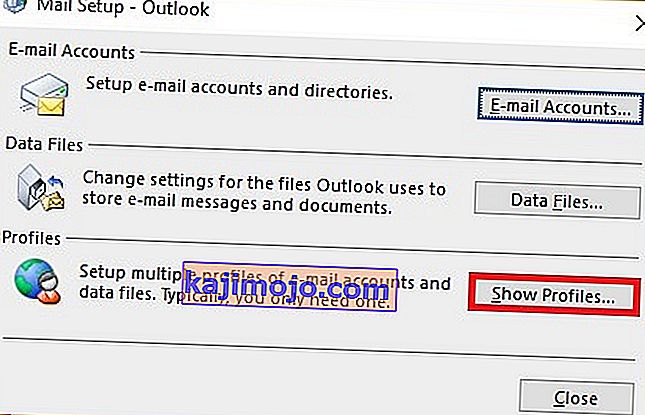
- Now, create a new profile by clicking the Add button. Insert a name and hit OK.
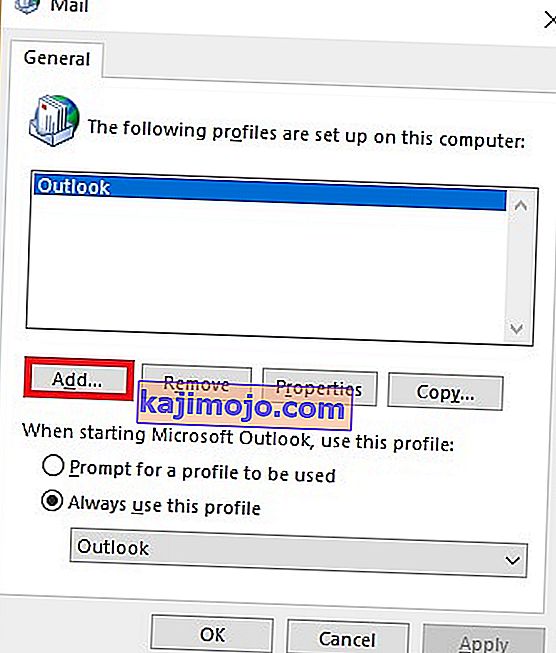
Note: Do not delete the original profile, because we don’t know if this will end up fixing the issue.
- Go through the steps of configuring your email account with Outlook. Make sure to use the same email that you have on the already created profile.
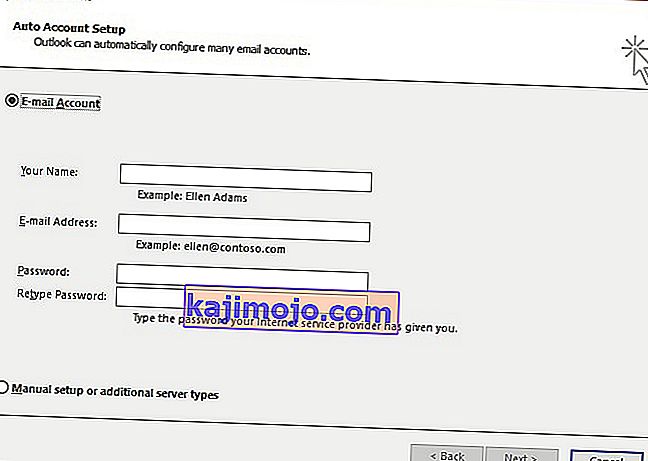
- Now return to the Mail window and make sure the profile you’ve just created is being used by default. Hit Apply to confirm your selection.
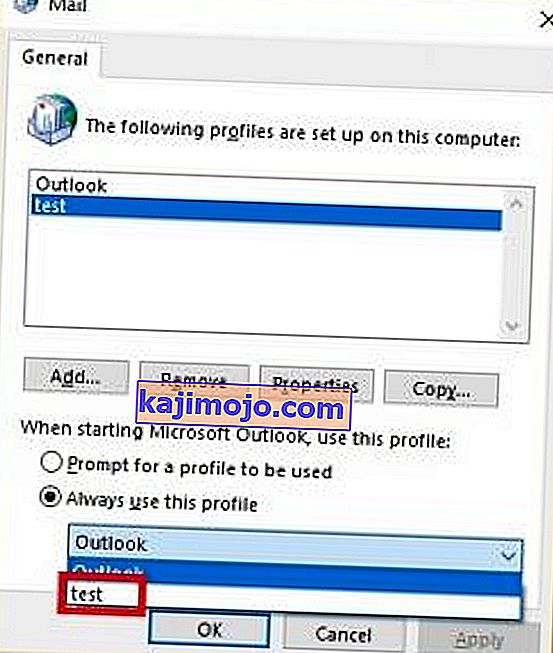
- Start Outlook again and see if it manages to start in normal mode after the profile reset.
Method 6: Checking the PST folder for corruption (All Outlook versions)
Another common cause for Outlook starting in Safe Mode is the Personal Folders File (PST). In the event that it becomes very large, or some files inside are corrupted, it might prevent the program from starting in normal mode. Luckily, you can easily check for corruption by using a Microsoft Repair tool called Scanpst.exe. Here’s what you need to do:
- Close Outlook completely and navigate to C:\ Program Files or C:\ Program Files (x86), depending on which version of Outlook you use.
- Use the search box in the top-right corner to search for SCANPST.exe.
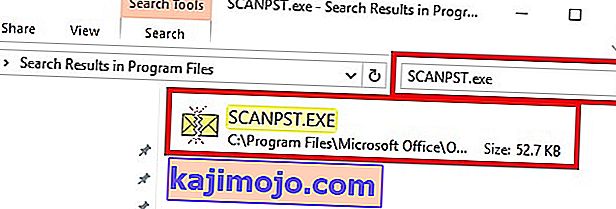 Note: If you don’t manage to find the SCANPST executable via the search bar, you need to navigate to the exact location. Here’s a list of the exact locations based on various Outlook versions:
Note: If you don’t manage to find the SCANPST executable via the search bar, you need to navigate to the exact location. Here’s a list of the exact locations based on various Outlook versions:2016: C:\Program Files (x86)\Microsoft Office\root\Office16 2013: C:\Program Files (x86)\Microsoft Office\Office15 2010: C:\Program Files (x86)\Microsoft Office\Office14 2007: C:\Program Files (x86)\Microsoft Office\Office12
- Open SCANPST.exe and set the path of the PST file you want to scan by using the Browse button. By default, the PST files are stored in Documents\Outlook Files. When you are ready, hit Start to begin the scan.
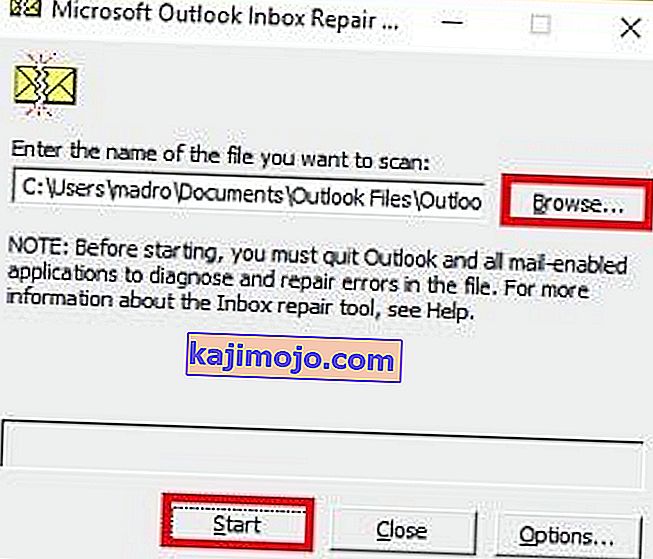
- If the scan uncovers errors or inconsistencies, click on the Repair button to fix them.
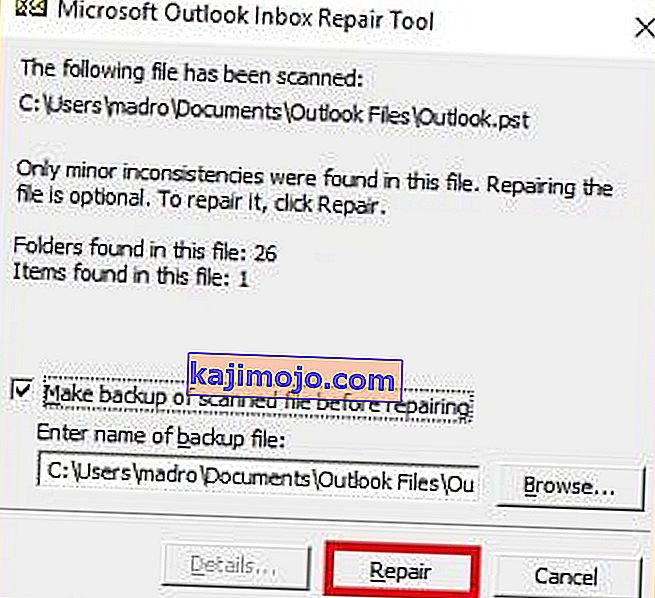
- Once the repair is done, restart Outlook with the profile that you’ve just repaired of errors and see if it starts in normal mode.
Method 7: Running the /resetnavpane command (All Outlook versions)
The navigation pane is that left portion of Outlook where you can oversee your folder list and access various icons to move between calendar, people, tasks, and mails. Sometimes, it can become glitched and prevent Outlook from starting in normal mode. Luckily, there is a command that removes any customizations to the navigation pane and gets rid of any glitch. Even better, this is done outside Outlook with ease. Here’s how:
- Close Outlook completely.
- Go to Start and access the Run application.
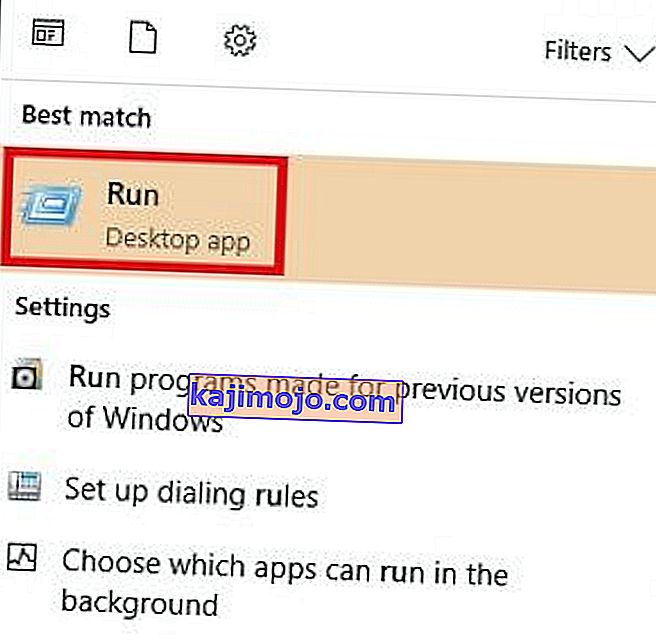
- Now, type Outlook.exe /resetnavpaneand hit OK.
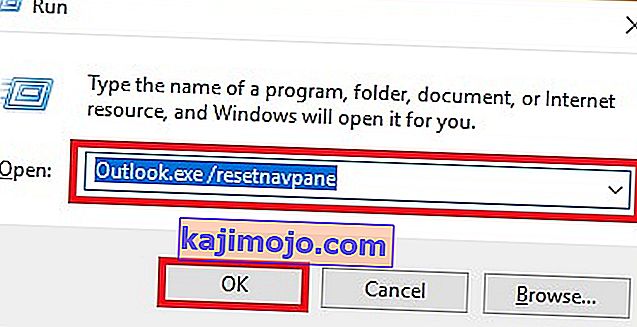 Note: Keep in mind that any customization to the navigation pane will be lost after you click on OK.
Note: Keep in mind that any customization to the navigation pane will be lost after you click on OK. - Shortly after, Outlook should automatically open in normal mode.
Method 8: Disabling compatibility mode
A lot of users have reported that they managed to start Outlook in normal mode after finding out it was running in compatibility mode. Compatibility mode is designed to help a program run as if it was running on an older operating system. As it turns out, turning off compatibility mode might just fix your Outlook Safe Mode problem. Here’s how:
- Close Outlook and navigate to the Outlook.exe on your computer. The exact path of it will differ, depending on your Outlook version. Here’s a list of the exact paths depending on your Outlook version:
2016 - C:\Program Files (x86)\Microsoft Office\root\Office16 2013 - C:\Program Files (x86)\Microsoft Office\Office 15 2010 - C:\Program Files (x86)\Microsoft Office\Office 14 2007: C:\Program Files (x86)\Microsoft Office\Office12

- Right-click on Outlook.exe and click on Properties.
- Now click on the Compatibility tab and make sure the box directly under Compatibility Mode is unchecked. Hit Apply to confirm your selection.
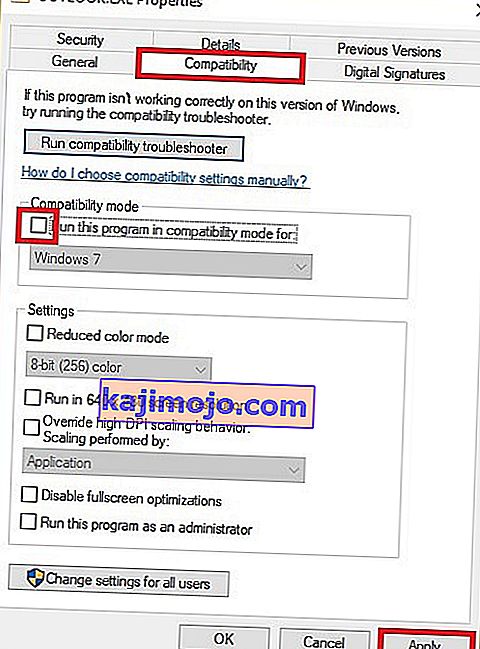
- Finally, open Outlook from the same Outlook executable and see if it manages to start in normal mode.
Method 9: Disabling hardware acceleration (All Outlook versions)
As it turns out, Outlook tries to use hardware acceleration whenever it can to make things as seamless as possible. If you’re Outlook forces itself into Safe Mode, it could very well be an issue with hardware acceleration. We can check to see if that’s the case by making some minor tweaks inside regedit. Here’s how:
- Go to Start and open the Run application.
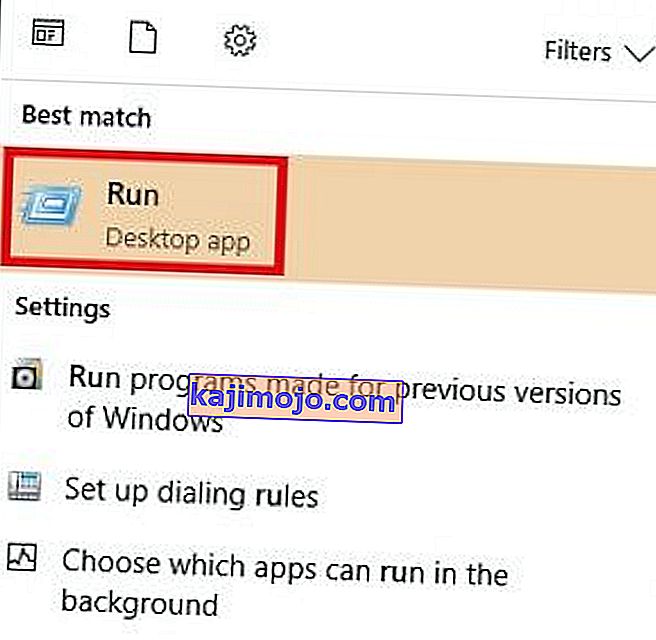
- Search for regedit and click OK to open the Registry Editor.

- Navigate your way to the following location
HKEY_CURRENT_USER\ Software\ Microsoft\ Office.
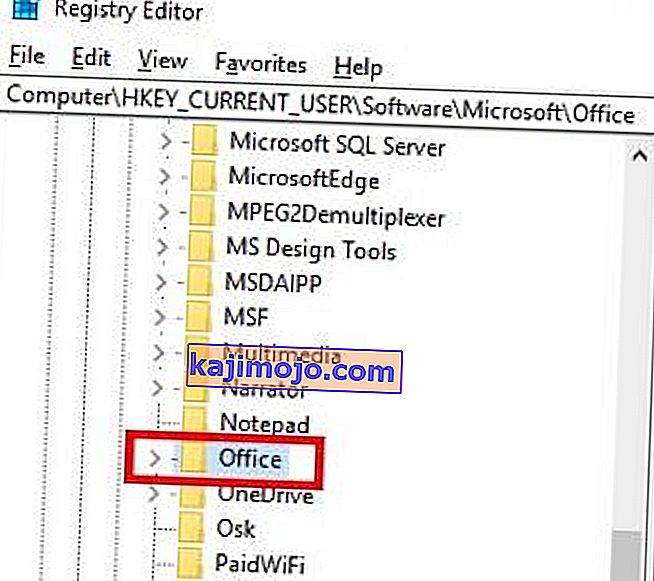
- Now, depending on which Outlook version you have, you might encounter different folders. You should either see a folder named 14.0, 16.0 or 8.0. Either way, click on the folder and double-click on the Common folder.
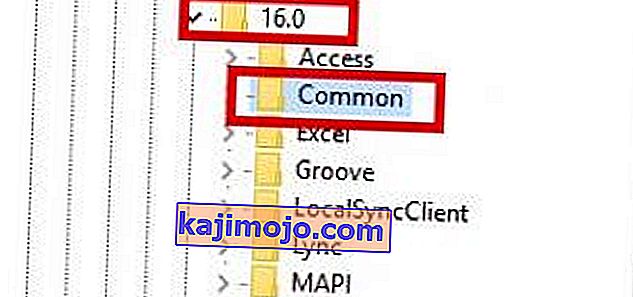
- Right-click anywhere in the Common folder, select New and click on Key and name it Graphics.
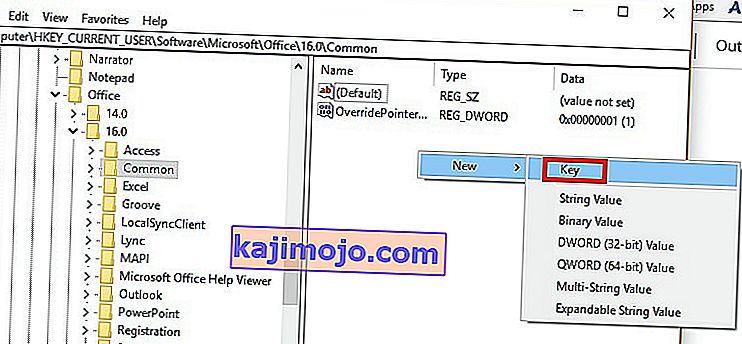
- Select the newly created Graphics folder and right-click on the right panel. From there, create a New Dword (32-bit) Value and name it DisableHardwareAcceleration.
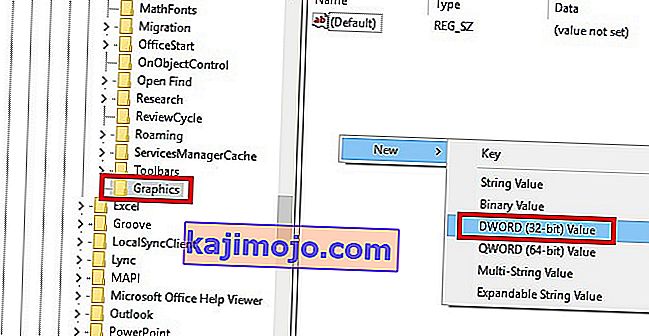
- Now double-click on DisableHardwareAcceleration and set the Value Data to 1 and hit Ok.
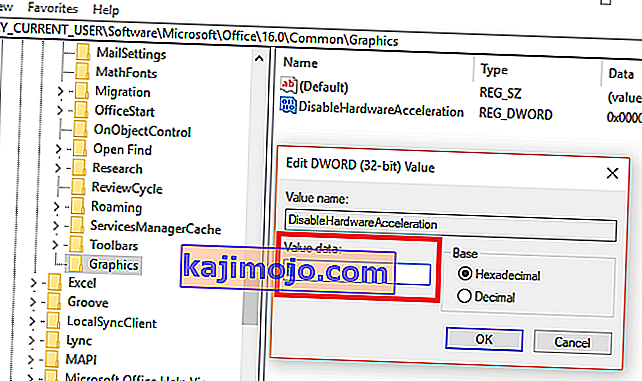
- Close regedit and open Outlook again to see if it starts in normal mode.
Method 10: Resetting the Safe Mode Registry Key (Outlook 2010)
If you have unsuccessfully followed all the methods above, there’s one more thing you can try. A final solution would be to try and prevent Safe Mode from kicking in by tweaking the registry key. But keep in mind that after you’ll follow the steps below, you won’t be able to use Safe mode in the future. At least not until you remove the key that we will create. Here’s what you need to do:
- Go to Start and open the Run application.

- Search for regedit and click OK.

- Navigate your way through HKEY_CURRENT_USER\ Software\ Microsoft\ Office.

- Now, depending on which Outlook version you have, you might encounter different folders. You should either see a folder named 14.0, 16.0 or 8.0. Either way, click on the folder navigate further to Outlook \ Security.
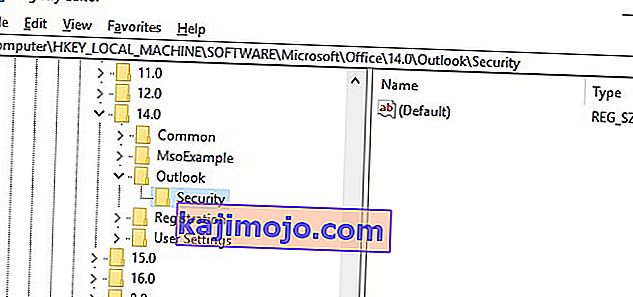 Note: If the Security folder is missing, Right-click > New > Key and type Security.
Note: If the Security folder is missing, Right-click > New > Key and type Security. - Right-click on the Security key and choose New > then DWORD (32-bit) Value.
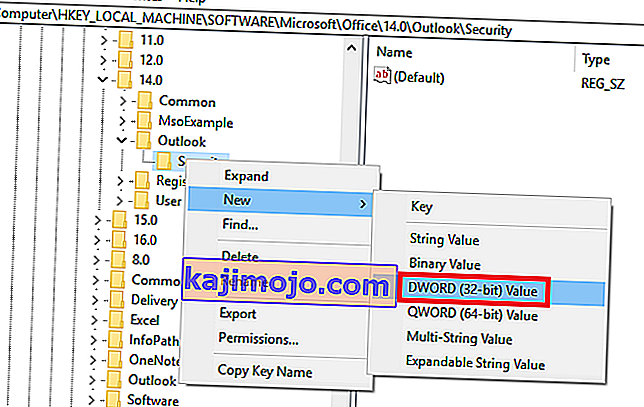
- Name it DisableSafeMode and press Enter to confirm.
- Right-click on DisableSafeMode and click on Modify.
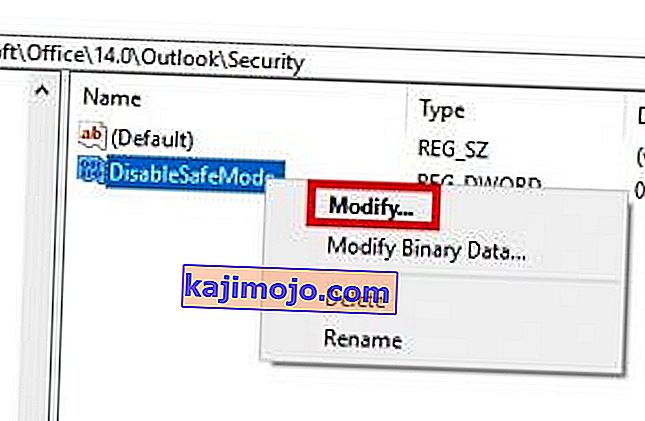
- Chèn giá trị 1 vào hộp Dữ liệu giá trị và bấm OK .

- Thoát khỏi Registry Editor và khởi động lại máy tính của bạn.
- Mở Outlook và xem liệu nó có khởi động ở chế độ bình thường hay không.






 Lưu ý: Chưa nhấn Xóa . Trước tiên, chúng tôi cần xác nhận rằng họ đang gây ra sự cố.
Lưu ý: Chưa nhấn Xóa . Trước tiên, chúng tôi cần xác nhận rằng họ đang gây ra sự cố.




 Lưu ý: Đảm bảo rằng Outlook không hoạt động được mở trước đó ở Chế độ An toàn đã bị đóng vì chúng tôi hiện đang chạy một trong các bản sao được lưu trong các phiên bản trước. Làm tương tự cho tất cả các phiên bản được liệt kê ở đó. Mở / Đóng cho đến khi bạn thấy cái mở mà không có Chế độ An toàn. Nếu nó hoạt động, hãy tiếp tục mở Cửa sổ.
Lưu ý: Đảm bảo rằng Outlook không hoạt động được mở trước đó ở Chế độ An toàn đã bị đóng vì chúng tôi hiện đang chạy một trong các bản sao được lưu trong các phiên bản trước. Làm tương tự cho tất cả các phiên bản được liệt kê ở đó. Mở / Đóng cho đến khi bạn thấy cái mở mà không có Chế độ An toàn. Nếu nó hoạt động, hãy tiếp tục mở Cửa sổ.












 Note: If you don’t manage to find the SCANPST executable via the search bar, you need to navigate to the exact location. Here’s a list of the exact locations based on various Outlook versions:
Note: If you don’t manage to find the SCANPST executable via the search bar, you need to navigate to the exact location. Here’s a list of the exact locations based on various Outlook versions:


 Note: Keep in mind that any customization to the navigation pane will be lost after you click on OK.
Note: Keep in mind that any customization to the navigation pane will be lost after you click on OK.








 Note: If the Security folder is missing, Right-click > New > Key and type Security.
Note: If the Security folder is missing, Right-click > New > Key and type Security.

